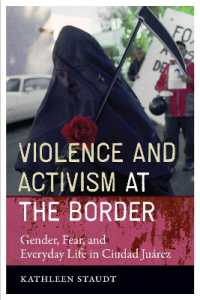Full Description
Celebrated as a feminist victory upon its passage as part of the Clinton Crime Bill, the Violence Against Women Act (VAWA) is a landmark piece of legislation that provides protections for survivors of gender and sexual violence. However, as Lee Ann S. Wang shows in The Violence of Protection, VAWA primarily funds law enforcement efforts to rescue women, and in doing so, creates conditions of racial violence against survivors from communities who are already policed, surveilled, and face immigration enforcement. Through ethnographic fieldwork with legal and social advocates serving Asian American survivors of gender and sexual violence in the San Francisco Bay Area, Wang shows how these activists grapple with laws which require survivors to cooperate with policing in order to receive protection. Engaging in methodologies of feminist refusal, theories of racial assemblage, and abolition feminisms, The Violence of Protection theorizes the victim as a legal subject and exposes the racial violence enacted when State-provided legal safeguards are leveraged to expand punishment against survivors, their communities, and others.
Contents
Introduction 1
1 Writing Against Legal Fictions: Feminist Refusals, Victim, and Ethnographic Impasse
2. Making the Undocumented Crime Victim: Cooperation, Model Minority, and Policing as Mutual Exchange
3. The Contractable Victim: The Racial Figure of the Modern-Day Slave, Injury, and Surveillance in Antitrafficking Law
Conclusion. Abolition Feminisms: Rewriting the Victim in Anti-Asian Hate
Acknowledgments
Notes
Bibliography
Index







